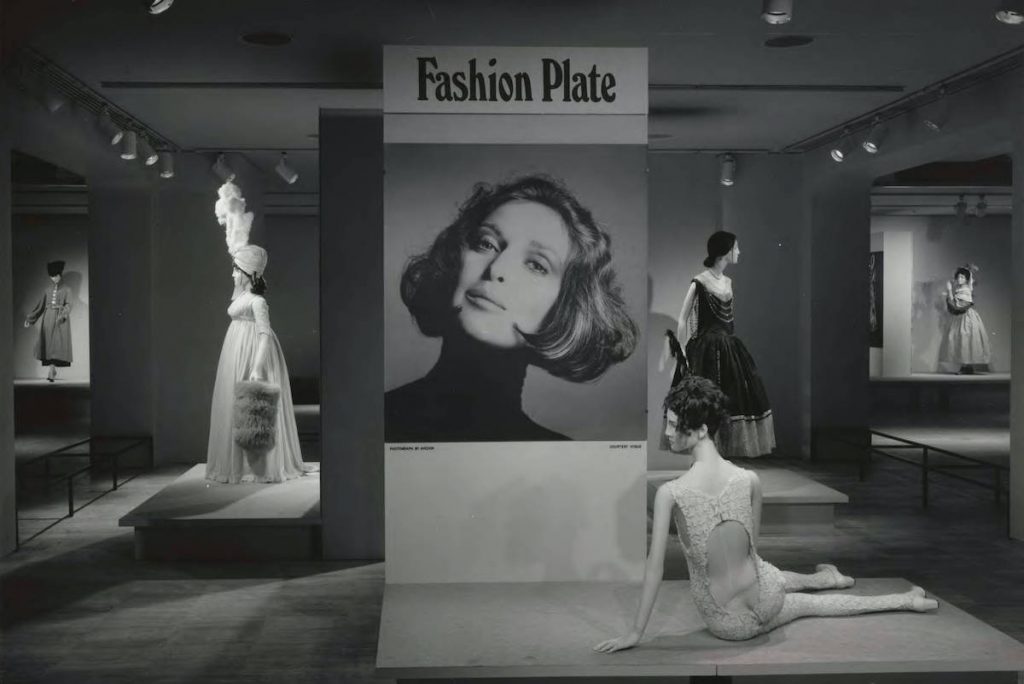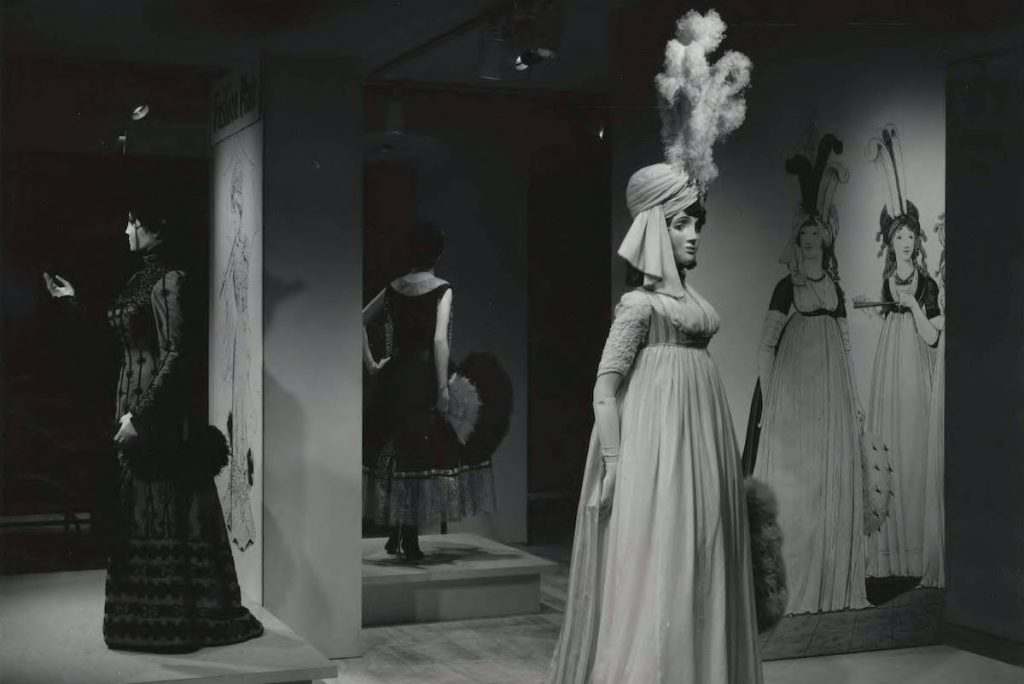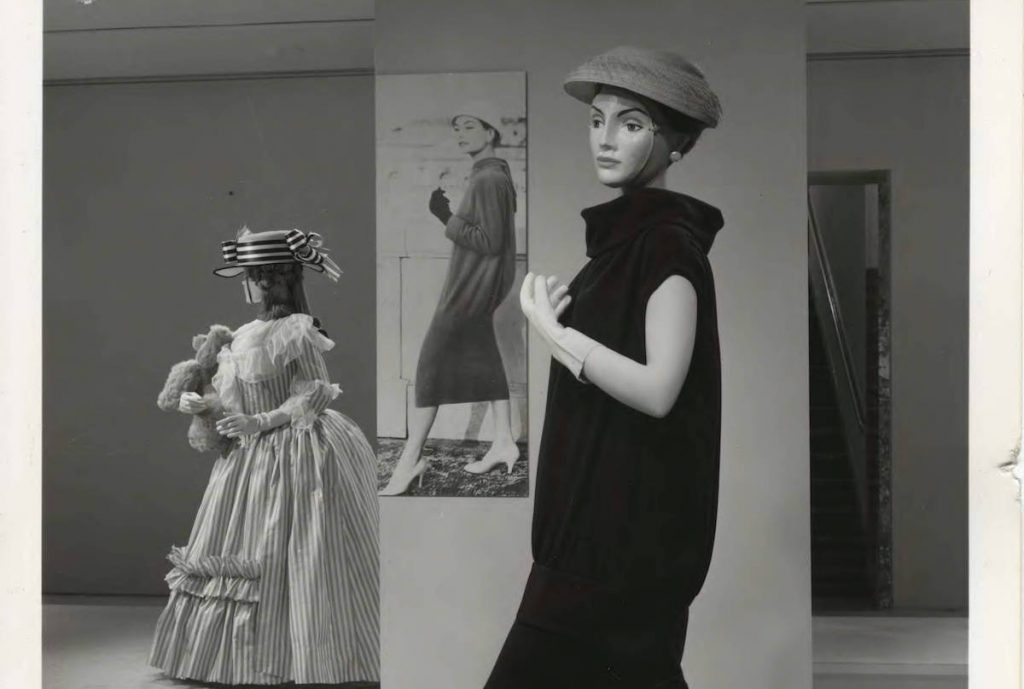Fashion Plate
The new Costume Institute’s inaugural exhibition, Fashion Plate, is intended as a salute t9 the people who form New York’s fashion industry, many of whom gave generously of their time and money so that the Costume Institute could become a reality. They, along with the City of New York, created our new facility.
What makes a new fashion? Is it the length of a hemline? The appeal of a well-known personality? Current events? New modes of travel? Whatever the cause or content of a fashion, its form is unmistakable, because it has form, powerful visual form. Look at the thirty high-fashion mannequins in the galleries and the fashion plates with them, at the dozens of shoes, hats, gloves, stockings, fans, and bags in the two cases, at the hundreds of fashion plate color slides projected on the two screens. Here are moments selected from the last two hundred years, moments when something about the form of a costume or accessory so completely dominates our perception of it, our sense of what it means and is doing, that we know we are in the presence. of things that have been rigidly controlled, idealized, dramatized, right out of the world of random into the sphere of fashion. Sometimes the statement of exaggeration repeated itself in the same terms down the years, sometimes it reversed itself, whether in a hundred years or two years. Time is not the dimension in which to measure these observations. See, for example, figure No. 5 (1833) with enormously overstated shoulders, and compare it with No. 28 (1947) showing exceptionally narrow shoulders. But then, No. 27 (1945) has dramatically broad shoulders. Two gauzy evening dresses (Nos. 4 and 20), made a hundred years apart, each make a strikingly seductive feminine statement in the highest fashion sense; both use filmy fabrics, but one celebrates the bust and denies the hips, while the other reverses the dramatic emphasis.
Other costumes in the exhibition stimulate thoughts related to these. The cut of each garment is so clear, so precise, that it lifts the clothing up into the realm of the ideal. This is where the fashion plate comes in. A fashion in clothing has to be designed, in visual terms. The fashion plate – be it print, photograph or live model – is the apotheosis of that design, the blueprint whereby the fashionably inclined may become fashionable.
C. Willett Cunnington, a physician and a costume historian, wrote in 1948 (The Art of English Cos-tume, p. 33£) “The fashion plate tells us, not what the costume will look like when worn, but what is the idea it attempts to express; in other words, what the designer – and wearer – would like it to look like. It represents a chart to guide us to that idea, and so, to make the path clear, the fashion plate exaggerates the track which the wearer is to follow … Therefore it emphasizes the salient features, especially those that are novel. These indicate the nature of those social aspirations prevalent at the moment. And we are shown not merely the ideal Form but also the ideal Pose.” (For some ideal poses, see Nos. 1, 7, 18, 19, 20, 26, 30.)
So we are not to expect that a waist will be as small, a bust as high, a shoe as slim, or a slouch as low, in reality as in the fashion plate. But the color, line, texture, and form, under the strict control that converts these images into specific fashions – these will come through, as they do in these galleries. They are visual elements in a visual art form. And the faces? Of course the ideal face changes every time a really novel fashion comes in. Some women are lucky enough to own the right face at the right time. Everyone else has to obey the rules by wearing a mask – a disguise of make-up as women do, or a mask of each period’s ideal face, as our mannequins do.


